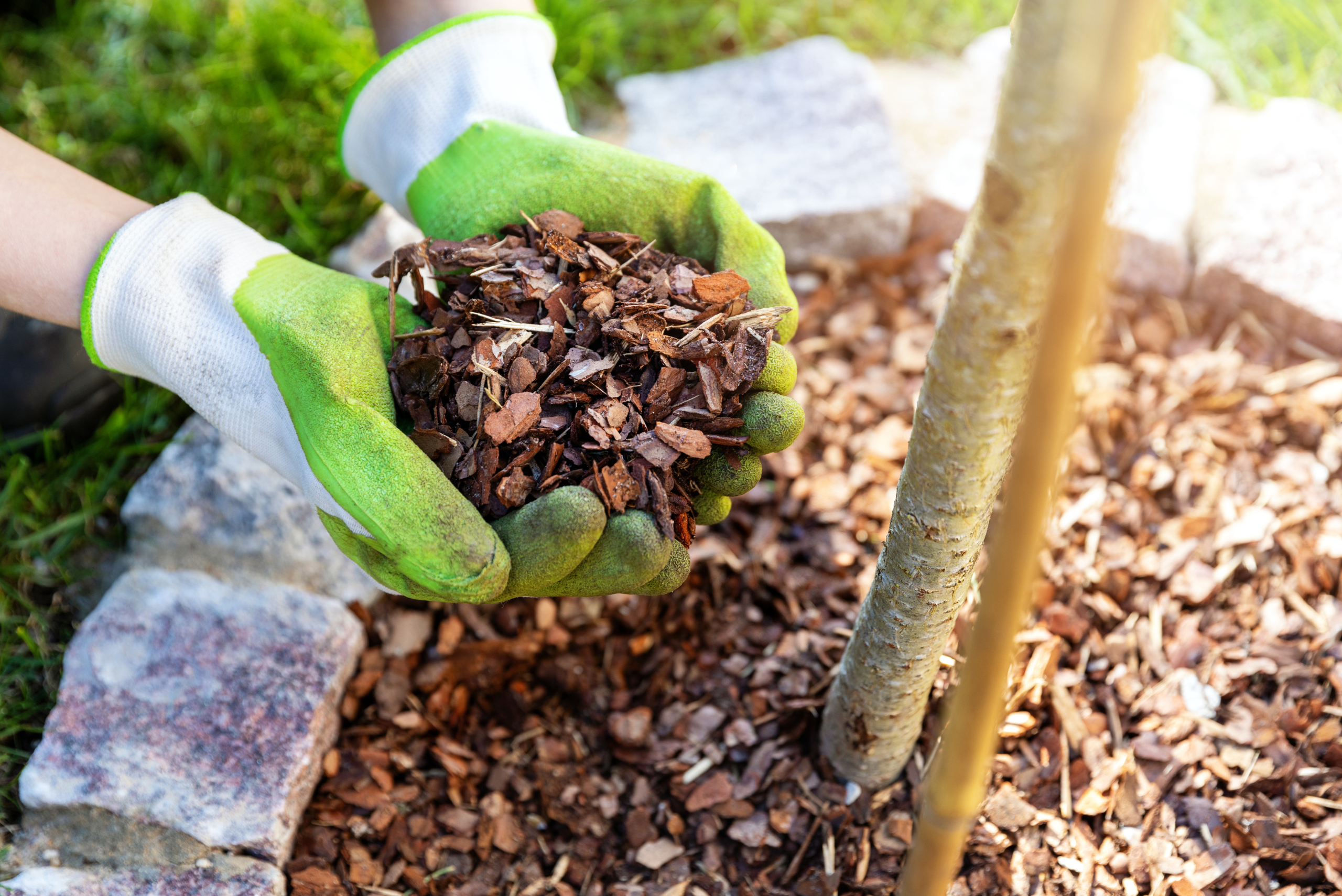Prepare Your Garden for Fall with These 8 Simple Tips
As the crisp autumn air settles in and leaves begin their colorful descent, it’s time to turn our attention to preparing our lawns and gardens for the cooler months ahead. While it may be tempting to hang up your gardening gloves and call it a season, fall is actually a crucial time for nurturing your outdoor space. With the right preparation, you can set the stage for a vibrant and healthy garden come spring. Let’s explore some essential tips and techniques to help you make the most of this transitional season and ensure your lawn and garden are ready to weather the winter and burst into life when warmer days return.
1. Soil Testing and Amendment to Ensure a Nourishing Foundation for Your Garden

Fall is the perfect time to assess and improve your soil’s health, as it gives amendments time to integrate before the next growing season. Start by conducting a soil test to determine its pH level and nutrient content. Many local cooperative extension offices offer affordable soil testing services, providing detailed reports and recommendations. Once you have your results, you can make informed decisions about which amendments to add to optimize your soil’s composition.
Based on your soil test results, you may need to add lime to raise pH levels or sulfur to lower them. Incorporate organic matter such as compost, well-rotted manure, or leaf mold to improve soil structure and nutrient content. This is also an excellent time to add slow-release fertilizers, allowing them to break down over the winter months and become available to plants in spring. By nourishing your soil now, you’re laying the groundwork for healthier, more robust plants in the coming year. Remember, healthy soil is the foundation of a thriving garden, so don’t skip this crucial step in your fall garden prep routine.
2. Lawn Care Essentials: Mowing, Aerating, and Overseeding for Lush Grass

As temperatures cool, your lawn’s growth will slow down, but that doesn’t mean you should neglect it. Continue mowing your grass at the recommended height for your specific type of turf until it stops growing. This helps prevent matting and reduces the risk of snow mold in colder climates. However, avoid cutting your grass too short, as longer blades provide insulation and help protect the roots during winter. Fall is also an ideal time to aerate your lawn, which helps relieve soil compaction and allows water, air, and nutrients to penetrate deeper into the root zone.
After aerating, consider overseeding your lawn to fill in bare patches and thicken the overall turf. Cool-season grasses, in particular, benefit from fall overseeding as they have time to establish strong root systems before winter sets in. Choose a grass seed mix that’s well-suited to your climate and lawn conditions. Water the newly seeded areas regularly to keep the soil moist until germination occurs. Additionally, apply a fall-specific lawn fertilizer to provide essential nutrients that will strengthen the grass’s root system over the winter months. These steps will help ensure a lush, healthy lawn when spring arrives.
3. Pruning and Trimming to Shape Your Plants for Healthy Spring Growth

Fall is an excellent time to prune many trees and shrubs, as they’re entering dormancy and won’t put energy into new growth that could be damaged by winter weather. Focus on removing dead, diseased, or crossing branches to improve the plant’s overall structure and health. However, be cautious about pruning spring-flowering shrubs, as you may inadvertently remove next year’s buds. For these plants, wait until after they bloom in spring to do any major pruning. When pruning, always use clean, sharp tools to make clean cuts that will heal quickly.
In addition to pruning woody plants, take time to cut back perennials that have finished blooming. This not only tidies up your garden but can also help prevent disease and pest problems over the winter. Leave some perennials with seed heads standing, as they provide food for birds and winter interest in the garden. For ornamental grasses, consider leaving them uncut until late winter or early spring, as they add texture and movement to the winter landscape. Remember, proper pruning and trimming in fall can lead to stronger, healthier plants with improved shape and structure in the coming growing season.
4. Planting Bulbs and Perennials for Spring Blooming

Fall is the perfect time to plant spring-flowering bulbs such as tulips, daffodils, crocuses, and hyacinths. These bulbs need a period of cold dormancy to trigger their growth cycle, making autumn planting ideal. Choose a well-draining location with adequate sunlight and plant bulbs at the proper depth – generally about three times the height of the bulb. Group bulbs in clusters for a more natural, impactful display. Consider planting bulbs in layers, with later-blooming varieties planted deeper and earlier bloomers closer to the surface, to create a succession of color throughout the spring.
In addition to bulbs, fall is an excellent time to plant many perennials, trees, and shrubs. The cooler temperatures and increased rainfall reduce stress on new plantings, allowing them to establish strong root systems before winter sets in. When selecting perennials, consider native species that are well-adapted to your local climate and provide food and habitat for pollinators. Plant perennials at the same depth they were growing in their containers, and water them thoroughly after planting. Mulch around new plantings to help retain moisture and protect roots from temperature fluctuations. By planning and planting now, you’ll be rewarded with a vibrant, colorful garden come spring.
5. Insulating Plants From Harsh Winter Conditions by Mulching

As temperatures drop, it’s crucial to protect your plants from the harsh conditions of winter. Mulching is an effective way to insulate plant roots and regulate soil temperature. Apply a 2-3 inch layer of organic mulch, such as shredded leaves, straw, or bark chips, around the base of plants, trees, and shrubs. Be careful not to pile mulch directly against plant stems or tree trunks, as this can lead to rot and pest problems. Mulching not only protects plants from temperature extremes but also helps retain soil moisture and suppress weed growth.
For more delicate plants, consider additional protection measures. Wrap the trunks of young trees with tree wrap to prevent sun scald and rodent damage. Use burlap screens or anti-desiccant sprays to shield evergreens from winter wind and sun damage. In colder regions, you may need to provide extra insulation for rose bushes by mounding soil or compost around the base and wrapping the canes in burlap. Container plants should be moved to a sheltered location or wrapped in insulating materials to protect their roots from freezing. By taking these protective measures, you’ll help ensure your plants survive the winter and emerge healthy in spring.
6. Cleaning up and Composting to Maintain a Tidy and Fertile Garden

Fall garden cleanup is essential for maintaining a healthy and attractive outdoor space. Remove any dead annuals, fallen fruits, and vegetables from your garden beds to prevent disease and pest issues. Rake up fallen leaves from your lawn to prevent them from smothering the grass. However, don’t be too quick to dispose of all this organic matter – it’s garden gold! Shred leaves with a lawn mower or leaf shredder and use them as mulch in your garden beds or add them to your compost pile. Leaves are rich in carbon and make an excellent addition to your compost, balancing out nitrogen-rich materials like grass clippings.
Start a compost pile if you don’t already have one. Layer “green” materials (like grass clippings and kitchen scraps) with “brown” materials (like dried leaves and small twigs) to create a balanced mix. Turn the pile occasionally to aerate it and speed up decomposition. By spring, you’ll have nutrient-rich compost to feed your garden. While cleaning up, leave some areas of your garden a bit “messy” – seed heads of perennials and ornamental grasses provide food for birds and shelter for beneficial insects during winter. Striking a balance between tidiness and natural habitat will create a garden that’s both attractive and ecologically friendly.
7. Winterizing Irrigation Systems to Prevent Damage From Freezing Temperatures

As winter approaches, it’s crucial to protect your irrigation system from freezing temperatures that can cause pipes to burst and components to crack. Start by shutting off the main water supply to your irrigation system and draining any remaining water from the pipes. This can typically be done by opening the drain valves or using compressed air to blow out the lines. Be sure to drain and store any above-ground components, such as hoses, sprinklers, and timers, in a dry, protected area. If you have an automatic irrigation system, turn off the controller or set it to “rain mode” to prevent it from activating during the winter months.
For in-ground systems, insulate any exposed pipes, valves, or backflow preventers with foam pipe insulation or heat tape. If you live in an area with particularly harsh winters, consider hiring a professional to properly winterize your irrigation system. They can ensure all water is removed from the system and that all components are adequately protected. Don’t forget to drain and store rain barrels or other water collection systems to prevent them from cracking due to freezing water. By taking these precautions, you’ll save yourself the headache and expense of repairing damaged irrigation equipment in the spring.
8. Tool Maintenance and Storage to Keep Them Ready for Next Season’s Gardening Tasks

As you wrap up your fall gardening tasks, take some time to care for your tools before storing them for the winter. Clean all tools thoroughly, removing dirt and plant debris. For metal tools, use a wire brush to remove any rust, then apply a light coat of oil to prevent further rusting. Sharpen the blades of pruning shears, loppers, and other cutting tools to ensure they’re ready for use next season. Wooden handles can benefit from light sanding to remove splinters and a coat of linseed oil to prevent drying and cracking.
Drain the fuel from gas-powered equipment like lawnmowers and tillers, or add a fuel stabilizer if you plan to store them with fuel. Clean or replace air filters and check oil levels. For battery-powered tools, remove the batteries and store them in a cool, dry place. Organize your tools in a dry, protected area where they won’t be exposed to moisture or extreme temperature fluctuations. Consider hanging tools on a pegboard or storing them in a garden tool rack to keep them organized and easily accessible. By properly maintaining and storing your tools, you’ll extend their lifespan and ensure they’re ready for action when spring arrives.
Related Articles
- Topdressing Your Lawn Is The Best Way To Ensure Thriving Grass
- How to Reseed Your Lawn Like a Pro in Just a Few Easy Steps
- Step-by-Step Guide for How to Sharpen Lawn Mower Blades
As we wrap up our fall garden preparations, it’s important to reflect on the cyclical nature of gardening and the valuable lessons each season brings. Fall is a time of transition, where we not only prepare our gardens for the coming winter but also lay the groundwork for next year’s growth and beauty. Remember that gardening is an ongoing process of learning and adaptation. As you complete your fall garden chores, take note of what worked well this past growing season and what you might want to change next year.
Ready to start your next project? Join our DIY community to receive tool tips, how-to guides, and exclusive creative insights. Subscribe to the ManMadeDIY newsletter now! Click here to unlock a world of hands-on inspiration.









